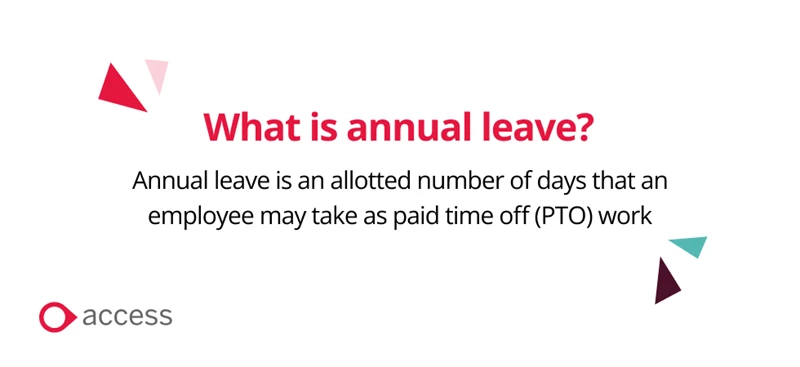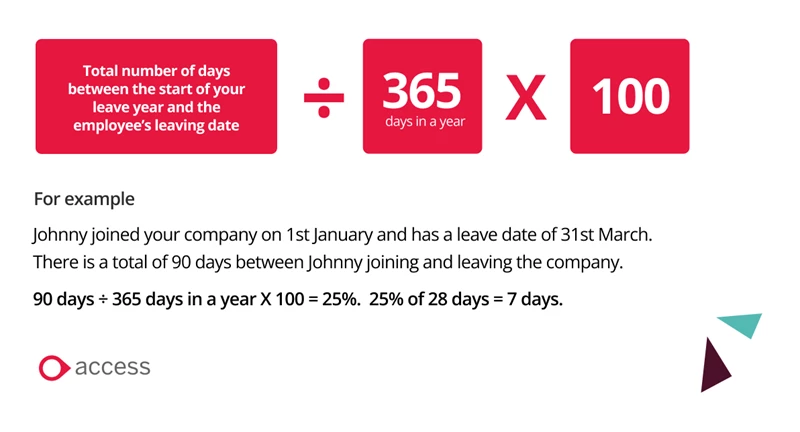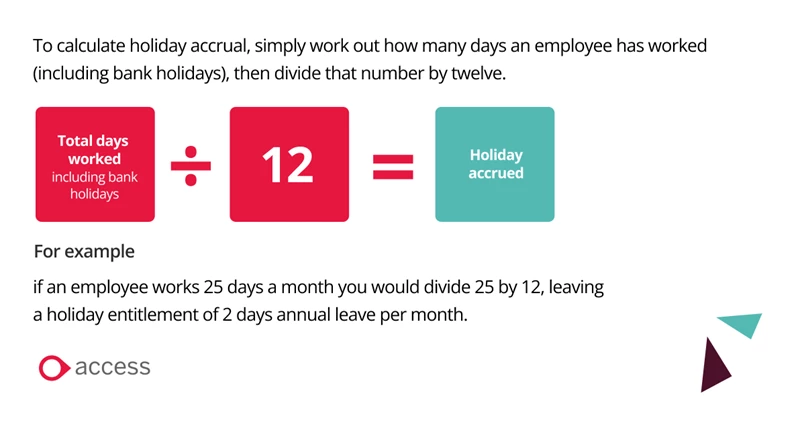-
- Employee Benefits
- Employee benefits
- Employee engagement
- Employee rewards
- Employee wellness hub
- Caboodle
-
- Your Stakeholders
- HR Director
- IT Director
- Finance Director
-
- Resources
- Guides and whitepapers
- Blogs
- Webinars
- Case studies
-
- Contact Us
- Contact Us
- Partner Programme

Annual Leave Management: A definitive guide for employers
When it comes to managing annual leave and holiday entitlement, employers and HR departments often find themselves trying to navigate a minefield of information. This is particularly true for those who don’t have a solid understanding of statutory requirements or a reliable leave management system to manage different allowances and requests.
In this extensive guide, we will walk you through the main requirements and considerations that your organisation should be acting on regarding annual leave and holiday entitlement, answer the question ‘Can an employer enforce leave?’ and explore the benefits of taking annual leave.
 13 minutes
13 minutes
Written by The Access Group
What this page covers
- What is annual leave?
- What is holiday entitlement?
- How to calculate holiday entitlement
- Contractual holiday entitlement
- Other methods of annual leave
- What are the benefits of annual leave for employees?
- Can an employer enforce annual leave?
- Four annual leave management challenges and how to solve them
- The importance of leave management
What is annual leave?
Annual leave is defined as an allotted number of days that an employee may take as paid time off (PTO) work. This time off can be used for anything the employee wishes, such as holidays and personal events or even just as time to relax.
When it comes to employees giving notice, different organisations will have different policies. These policies should be clearly detailed as part of the employer’s holiday policy. If not, the general rule of thumb is to give a notice period which is twice as long as the holiday the employee wishes to take, so a one-week holiday would require two weeks’ notice.

What is holiday entitlement?
Holiday entitlement – also known as annual leave entitlement – refers to the legal requirement for employers to give their staff a certain number of fully paid holidays.
An employee’s annual leave entitlement depends on how many days or hours they work and whether they have any additional agreements in place with their employer. The specific terms of annual leave should be clearly outlined in each employment contract and discussed with every employee as part of their induction process.
Holiday entitlement is normally split into two main categories: statutory annual leave required by law and contractual annual leave which may be offered as a bonus at the discretion of the employer.
What is statutory holiday entitlement in the UK?
One of the primary factors with holiday entitlement is the type of employment contract under which your staff are working. Full-time, part-time and zero-hours workers all have different statutory rights and leave entitlements, and these differences should be fully understood by line managers and staff alike.
So, what is the minimum holiday entitlement? Let’s take a look...
Full-time workers
Full-time workers who work five days per week must receive at least 5.6 weeks of annual leave each year, which works out to 28 days’ paid holiday as a minimum.
Please note that statutory holiday entitlement is limited to 28 days. For example, employees working six days a week will still only be entitled to 28 days paid leave by law.
Part-time workers
Employees working part-time must receive at least 5.6 weeks of paid annual leave, although their total holiday entitlement will depend on how many days or hours, they work each week. For example, if they work three days a week, they must get at least 16.8 days (about 2 and a half weeks)’ leave per year (3 × 5.6).
Any employees working irregular hours are also entitled to paid time off depending on how many hours they work.
Considerations
Bank holidays – Bank holidays do not have to be given as paid leave, although employers often choose to include bank holidays as part of an employee’s statutory annual leave entitlement.
Maternity, paternity or sick leave – Employees have a statutory right to accrue holiday entitlement during maternity leave, paternity leave and sick leave, which can then be carried over into the following year’s leave entitlement. Again, this is capped at 5.6 weeks of unused days, or 28 days if the employee usually works five days per week.
How to calculate holiday entitlement
To calculate an employee’s holiday entitlement, you must first know their total holiday entitlement, as well as how many days they work per week. For full-time workers, this is usually 28 days entitlement and five working days per week.
If you’re unsure about how many days leave an employee is entitled to, make sure to check the annual leave calculator on the GOV.UK website.
How to calculate holiday entitlement for new starters
Not all new starters will begin their employment on the first day of the employer’s leave year, so when you calculate holiday entitlement for a new starter you must figure out how many months remain in the current leave year. Then, using the formula of total entitlement ÷ 12 (months) X number of months, you can calculate their total holiday entitlement per month.
For example:
Julie is a new starter who joins your company full-time at the end of September. There are three months remaining in the leave year which runs from January to December. 28 days ÷ 12 (months) X 3 (months) = 7 days entitlement remaining for the year.
How to calculate holiday entitlement for leavers
When it comes to calculating the holiday entitlement of a leaver, you can use the total number of days between the start of your leave year and the employee’s leaving date ÷ 365 days in a year X 100 to work out the percentage of full-holiday allowance entitlement for the employee.
For example:
Johnny joined your company on 1st January and has a leave date of 31st March. There is a total of 90 days between Johnny joining and leaving the company. 90 days ÷ 365 days in a year X 100 = 25%.
Johnny had a holiday allowance of 28 days, meaning he is now entitled to 7 days annual leave as 25% of 28 days = 7 days. To work out what the employee is owed, you must then deduct any bank holidays or annual leave that has already been taken from the 7 days accrued. Should any holidays remain at the time of the employees leave date, these should be paid in their final salary.

Contractual holiday entitlement
Employers looking to incentivise staff and reward loyalty may decide to offer more paid annual leave than the legal minimum; however, it’s worth noting they do not have to apply all the rules that apply to statutory annual leave to the additional contractual leave.
For instance, a member of staff may need to work for a company for a certain period of time before they become entitled to the extra holiday entitlement. This can be a great way to engage employees beyond pay and drive long-term retention.
Employers may also choose to offer holiday carryover as an extra benefit to their staff, the details of which should be clearly communicated to each employee in their employment contract.
Other methods of annual leave
Holiday accrual
Whilst most businesses choose to have a holiday entitlement of 28 days each year, some employers opt for a holiday accrual system. But what is holiday accrual, and how does it work?
Holiday accrual sees employees build up their holiday pay entitlement from the moment they join the business, accruing a proportion of their holiday entitlement monthly.
For example, when an employee joins a business using a holiday accrual system and has worked there for a total of six months, they will have accrued 50% of their holiday entitlement for the year.
The calculation for holiday accrual is straightforward. Simply calculate how many days an employee has worked (including bank holidays), then divide that number by twelve.
For example, if an employee works 25 days a month you would divide 25 by 12, leaving a holiday entitlement of 2 days annual leave per month.

For employees with holiday entitlement remaining at the end of the year, there are several ways in which they can calculate their holiday pay accrual, these include:
- The number of weekly days or hours worked
- An average number of hours worked during a set period of time
- The regular shift patterns of an employee
Rolled up holiday pay
Those managing irregular or part-year workers may adopt the common yet controversial practice of rolling up holiday pay. Rolled up holiday pay ‘rolls up’ an employee’s basic salary and holiday pay into one package, meaning that the employee will receive an enhanced hourly rate, to compensate for the fact they will not receive any holiday pay during the time of their annual leave.
Whilst rolled up holiday pay is legal for both irregular and part-year workers in the UK, there can be some serious risks for businesses using this method of pay. To learn more, download our informative guide to rolled up holiday pay.
What are the benefits of annual leave for employees?
Annual leave provides employees with the opportunity for rest and rejuvenation, which is pivotal in ensuring their productivity and engagement. In fact, taking annual leave can boost wellbeing and productivity by up to 40%.
But productivity aside, employees who regularly use their annual leave entitlement can also benefit from:
- Reduced stress levels
- Improved mood
- Greater mental and physical health
- A boost in morale
Recognising the importance of annual leave should be part of a comprehensive strategy to improve mental health and wellbeing in the workplace. If businesses are actively encouraging employees to take and enjoy their annual leave allocation, it demonstrates their commitment to fostering a supportive and healthy work environment, ultimately leading to increased retention rates and a more motivated workforce.
Can an employer enforce annual leave?
We know there are many benefits of annual leave for employees, but what happens when an employee forgets to take their annual leave?
As well as facing burnout, lower job satisfaction and motivation, reduced creativity and increased health issues, having a workforce who do not make use of their annual leave entitlement can lead to increased sick leave which can be costly to your business.
So, with the stakes high, can you enforce an employee to take annual leave?
The short answer? Yes, you can request your employees to take their annual leave so long as the request is reasonable, does not discriminate and falls in line with the rules outlined below.
To enforce annual leave, you must:
- Legally outline the rules relating to when an employee can take their leave along with any restrictions, within a workforce agreement.
- Ensure the workforce agreement is readily available to all employees, whether this be including it within an employee's contract or your staff handbook
- Ensure all rules are clear, justified, fair and consistent.
It is also common practice for companies to have periods of company-wide shutdowns due to significantly reduced workload, this usually happens during the festive period. In cases such as these, when organisations must manage leave of absence, it is good practice to note this within company documents such as an employee’s contract or staff handbook, making it clear that this enforced leave is included within their holiday entitlement.
Businesses can also refuse employee’s holiday requests, but only if they have a valid reason to.
By following these leave management best practices, you can ensure that your workforce is taking the correct measures to deal with enforced leave correctly.
How to enforce annual leave
Firstly, it is important to ensure you have clearly outlined your policies on enforced leave within company documentation. This will not only ensure that you’re legally covered but can also help to ensure employees do not feel blind-sided or resentful when they are forced to take periods of leave.
Regular communications such as emails are a great way to remind and encourage employees to use their full holiday entitlement and see periods of enforced leave as a positive. Unsure what to say? Why not download our handy enforced leave email template to help get you started.
Staff holiday booking systems provide a great way to monitor and manage employee annual leave and holiday entitlement. With the use of automated systems, holidays can be approved automatically and you will have complete visibility of planned and upcoming leave, allowing you to spot those who may need a little extra push to take time off.
Four annual leave management challenges and how to solve them
1. Manual processes
HR teams often get bogged down by the repetitive admin involved with keeping accurate and up-to-date records of individual holiday entitlements. The right Leave Management Software can make a world of difference by automating key parts of the process whilst reducing the reliance on outdated systems and spreadsheets.
2. Human error
Frequent changes and last-minute requests can sometimes be missed by managers, especially during busy periods of the year. Ideally, your HR team should be managing leave from a single source of truth, where all data is logged, shared and automatically updated whenever a change is made.
3. Preventing disengagement
It’s crucial that managers communicate with individuals about how many days they have left, and by which date they need to use them. If employees lose out on holiday entitlement without being given fair warning, they can quickly become disengaged. Again, an intuitive self-service HR platform can make it easy to keep track of holiday entitlement and keep staff informed of how many annual leave days they have left to take.
4. Holiday bottlenecks
Juggling annual leave ‘bottlenecks’ at peak times of year such as Christmas can be tricky. If you are worried about being understaffed during such periods, it might be worth discussing a policy with staff which ensures everyone can take a minimum or maximum number of days whilst still making sure enough people are able to work.
The importance of leave management
Given the importance of leave management and the nuances involved, it’s no surprise this area of people management often leads to confusion, compliance issues and grievances among staff. And the last thing any business owner or HR professional wants is to waste valuable time manually tracking and approving annual leave or worrying about staying compliant.
Having an integrated HR system will not only allow you to manage your employees annual leave, holiday entitlement and pay with ease, but also provides a more streamlined booking process where employees can see their entitlement, and request or cancel leave at the touch of a button. This self-service feature is a wonderful way to engage employees and ensure they are planning their time effectively.
The current state of annual leave
Unfortunately, the UK has seen the amount of annual leave taken drop by 7.67% since 2022. As well as this, 83.33% of industries saw a drop in their annual leave entitlement. All of this new data comes from our latest Annual Leave Report.
Speaking in the report, Charles Butterworth, Managing Director of the People Division at The Access Group, said:
"Workers across the UK are under a great deal of pressure with rising household expenses, work-related stress and personal commitments. It’s more important than ever that people take time off to rest and recharge – so that they can come back stronger.
But taking holidays should never feel like it’s part of the job. As revealed in the report, the number of employees taking their full annual leave entitlement has declined in all industries. There could be many reasons for this, like poor planning, anxiety about falling behind, or a heavy workload. Ultimately, it’s our duty as employers to help our teams book time off, whether this is through regular reminders or implementing a simple and efficient booking system.
Companies need to take action and investigate why employees are reluctant to take time off, so that they can put strategies in place to support them. It’s also essential that companies and employers have a clear view of any requests, so that they can manage them instantly."
Whether you’re an SMB or an enterprise organisation, get in touch today to see how our HR software can ensure you have full visibility of annual leave across your organisation.
